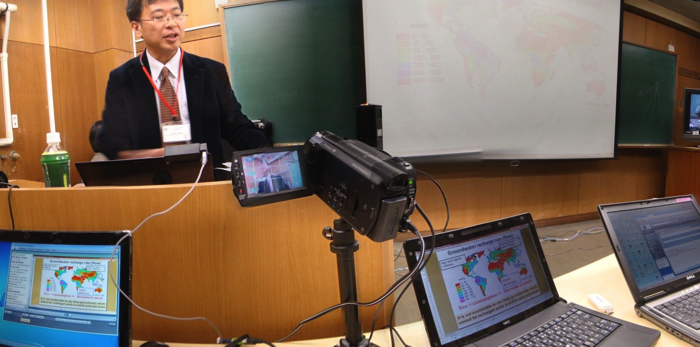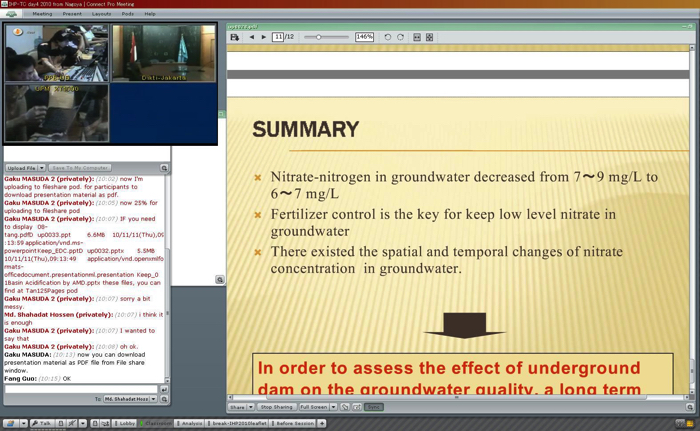- Project Leader : Takara Kaoru (Disaster Prevention Research Institute, Kyoto University)
- Collaborators : Mizuno Kosuke (Center for Southeast Asian Studies, Kyoto University)
- : Mohmd Akbar Hussain (Department of Anthropology, Faculty of Social Sciences, Jahangirnagar University)
- : Basuki Suhardiman (Information Resource Unit, Institut Teknologi Bandung)
- : Alvin Yeo Wee (Faculty of Computer Science and IT, Universiti Malaysia Sarawak)
- : Kitani Kimiya (Center for Southeast Asian Studies, Kyoto University)
- : Masuda Gaku (Educational Unit for Adaptation and Resilience for a Sustainable Society (GCOE-ARS), Center for Promotion of Interdisciplinary Education and Research (CPIER), Kyoto University)
Outline of Research
This research is a feasibility study aiming at a comprehensive evaluation of the next generation remote conference system used for the international training program of UNESCO-IHP (International Hydrological Program).
Description
In order to strengthen the quality of international collaborative research in Asia, it is necessary to provide an infrastructure for daily-basis research communication among research sites that are geographically scattered throughout Asia. Nevertheless, communication tools such as conventional remote conference connections are costly to maintain. Therefore, this research aims to evaluate how to best use the next generation remote conference system comprehensively in a situation of research communication. This remote conference system provides a direct connection between a technical training program and the participant’s personal computers around the world, so that participants can easily obtain access to a lecture or meeting along with training materials.
This next generation remote conference system allows remote meetings and training without any special equipped conference room or any travel cost. Participants are individually and directly connected to a virtual communication site, allowing for more active participation than through a conventional room-based meeting system.
How can such theoretical differences change the user experience? What are the benefits and drawbacks of this particular remote conference system in terms of economic efficiency, flexibility and technological availability? Through such evaluation, we can determine how we can best use this technology as a communication infrastructure for international collaborative research.


